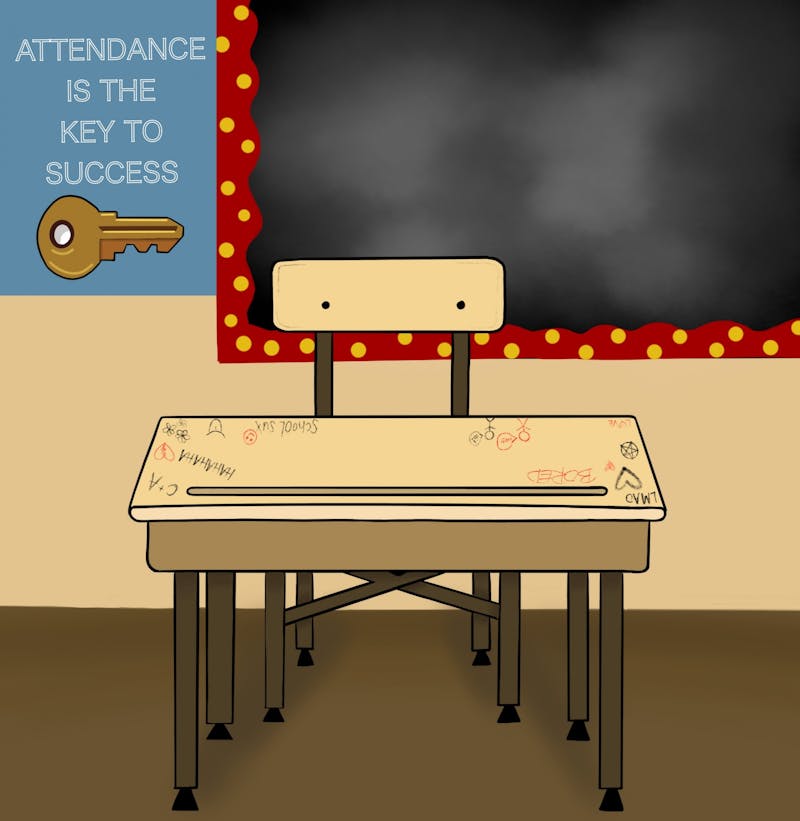

Playing hooky. Cutting class. Skipping school.
Unexcused absences have long been considered the reason many students don’t perform well in school.
However, a recent report by the Madison Education Partnership found what many researchers had already suspected from past studies of elementary education: unexcused absences are not a direct cause of poor academic performance.
In fact, poor academic performances are more likely to be a cause of unexcused absences, along with factors relating to health and demographics.
“That was a little bit of a surprise,” said Dr. Katie Eklund, a UW-Madison assistant professor of educational psychology. “There was some belief attendance problems had a higher correlation with academic achievement as you move into middle school or high school.”
Eklund, the lead researcher, completed the study through the MEP in partnership with UW-Madison and the Madison Metropolitan School District to determine how absences affect education and what causes them.
As MEP's resident expert on this research line, she was tasked, along with other researchers from UW-Madison and MMSD, to study unexcused absences in relation to the unique needs of the school district and community.
The study, “Missing School in Middle School: The Signal Absences Send,” reported that while absences are negatively associated with achievement, most of that association is accounted for by “student demographics, health conditions and prior student achievement.”
It was also found that unexcused absences aren’t a problem among a select group or demographic. Almost all students have at least one excused absence each year between grades six and eight.
Still, the issue of unexcused absences in Madison has grown over the past six years, as MMSD has seen an increase in those numbers, as well as absences accumulate in middle school.
Student absenteeism has even become a national issue, as one in seven students in K-12 schools within the U.S. is chronically absent from school. Chronically absent, defined by the US Department of Education, meaning missing just two days of school each month — a total of 18 days in the year.
The Department of Education reported during the 2016-’17 school year, 16.9 percent of students in Wisconsin and 20 percent of students in MMSD were chronically absent from school.
“These are the early predictors of worse attendance in high school — it is important for schools to pay attention to what might be leading to absences, especially during middle school,” Eklund stated.
Megan Miller, the Lead Attendance Social Worker at MMSD, believes the MEP’s assessment will help direct focus on what may be deterring kids from getting to school.
“The assessment provided in the study helps direct focus on what may be root cause barriers to get kids to school,” she stated. “It suggests that missing school is a signal that something else in the student’s life may be a barrier to their attendance.”
Transportation difficulties, unstable housing conditions, bullying or health conditions are all potential obstacles to a student attending class. The study notes absences might affect groups of students differently with regards to race and ethnicity, gender, as well as free or reduced lunch status.
And while schools may not be able to identify one reason or a simple solution for improving student absenteeism, the Madison Education Partnership points to these issues as possible points of intervention.
“We encourage staff to partner with families and the community to remove these barriers and help improve students' ability to achieve at school,” Miller said.
Another issue is determining a student’s likelihood to accumulate absences is school climate — a student’s feelings of belonging, respect and safety, as determined by the Madison Education Partnership.
A survey was taken during the study that showed students who disagreed with the statement “I feel I belong at this school” had a median of approximately 7.5 excused absences per year. Students who strongly agreed with this statement had 5.5 excused absences per year.
Miller said while the study points out a school’s climate may contribute to unexcused absences, she believes MMSD does a sufficient job in making schools a safe and welcoming place for all students.
“MMSD recognizes that a sense of belonging and positive relationships are protective factors for increasing student attendance and achievement,” Miller said.
MMSD is still making plans to address issues that arose in the MEP’s report. The district will be collaborating with MEP to pull information about research-based attendance improvement strategies to find fits with the resources available to Madison schools. A research study is also underway with elementary level schools to learn more about the root cause of absences.
In addition, MSD will be hosting an April 2020 Dane County Truancy Summit to discuss practices and learn from other districts and agencies that support school attendance in Dane County.
Ultimately, Eklund believes that unexcused absences in middle school should continue to be studied to better determine how to minimize absences in the future.
“As far as the why and how of the report, the Madison Education Partnership is now engaged in research to better understand why kids are missing school in order to help better ways to support their increased attendance in school,” Eklund said. “We hope to be able to share more information regarding these results this summer/fall — so stay tuned!”